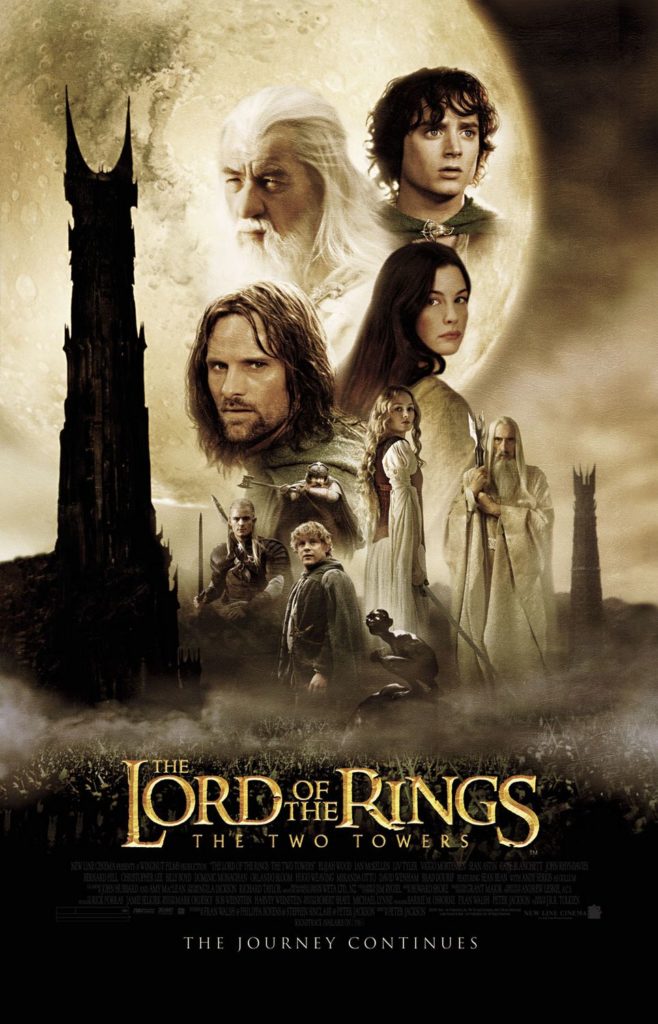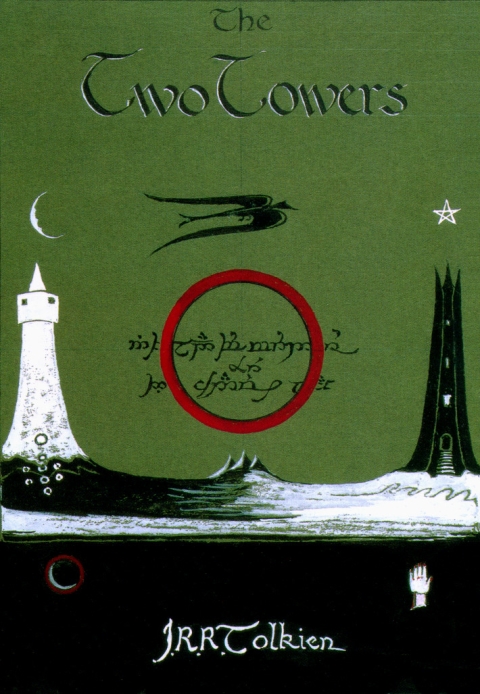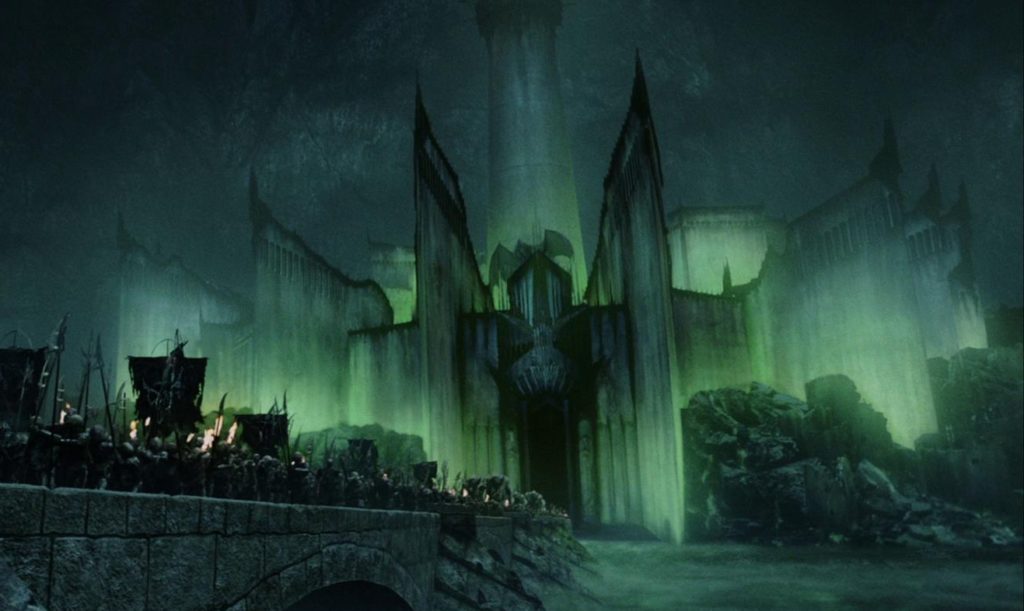No doubt you recognize the two towers in the DVD cover of The Lord of the Rings: The Two Towers:

DVD cover of The Lord of the Rings: The Two Towers (2002)
The Two Towers are Barad-dûr on the left and Orthanc on the right. These are the towers the book The Two Towers was named after.
OR ARE THEY? (you knew this wasn’t going to be so straightforward, right?)
It should probably go without saying, but I’ma have spoilers below. If spoilers for 60-something-year-old books and 20-something-year-old movies are an issue for you, you have been warned.
Tolkien never liked the title “The Two Towers” (he also didn’t like “The Return of the King” because, um, spoilers – he wanted it to be called “The War of the Ring”). In fact, he never intended for The Lord of the Rings to be a trilogy at all. Tolkien originally planned on The Lord of the Rings being one book with six sections, but his publishers pushed for it to be broken into three books, each containing two of the sections of the original work, because paper and ink were in very short supply when the book was to be published and they thought prospective customers would balk at purchasing a huge tome. This lead to sections III and IV, two non-overlapping arcs, being published in the same book. Tolkien, having considered “The Ring in the Shadow” (Letter 136) and “The Shadow Lengthens” (Letter 139), finally settled on “The Two Towers” but he hadn’t settled on which two towers fit the bill. With five to choose from (Cirith Ungol, Orthanc, Minas Tirith, Barad-dûr, and Minas Morgul), he almost left the matter ambiguous and up to the reader to decide, writing to his publisher in in 1953 in Letter 140:
“The Two Towers” gets as near as possible to finding a title to cover the widely divergent Books 3 and 4; and can be left ambiguous – it might refer to Isengard and Barad-dûr, or to Minas Tirith and B; or Isengard and Cirith Ungol.”
Tolkien later appeared to settle on the two towers being Orthanc and Cirith Ungol, as he wrote in 1954 in Letter 143:
“I am not at all happy about the title ‘The Two Towers’. It must if there is any real reference in it to Vol II refer to Orthanc and the Tower of Cirith Ungol. But since there is so much made of the basic opposition of the Dark Tower and Minas Tirith, that seems very misleading.”
However! It seems Tolkien later had a change of heart about on the identities of the towers, with this text appearing at the end of most copies of The Fellowship of the Ring:
Here ends the first part of the history of the War of the Ring.
The second part is called The Two Towers, since the events recounted in it are dominated by Orthanc, the citadel of Saruman, and the fortress of Minas Morgul that guards the secret entrance to Mordor; it tells of the deeds and perils of all the members of the now sundered fellowship, until the coming of the Great Darkness
This is further illustrated (literally!) by Tolkien’s dust jacket art for The Two Towers, which shows Orthanc as a black tower with a star overhead and the White Hand of Saruman underneath. Meanwhile, Minas Morgul is shown as a white tower with a crescent moon above and below. A nazgûl flies between the two.
 Tolkien’s design for the dust-jacket of The Two Towers as submitted to publisher Allen & Unwin
Tolkien’s design for the dust-jacket of The Two Towers as submitted to publisher Allen & Unwin
Why a white tower and a crescent moon? Before being taken over by the forces of Sauron, Minas Tirith’s twin city was called Minas Ithil, or the Tower of the Moon, the white marble of the city gleaming white in the moonlight.

Screenshot from the video game “Middle-earth: Shadow of War” (2017)
Once occupied, the city turned from a shining bastion of beauty to a place that glowed with a pale sickly light and exuded poisonous vapors. We see it briefly in The Lord of the Rings: The Return of the King:

Still from The Lord of the Rings: Return of the King (2003)



